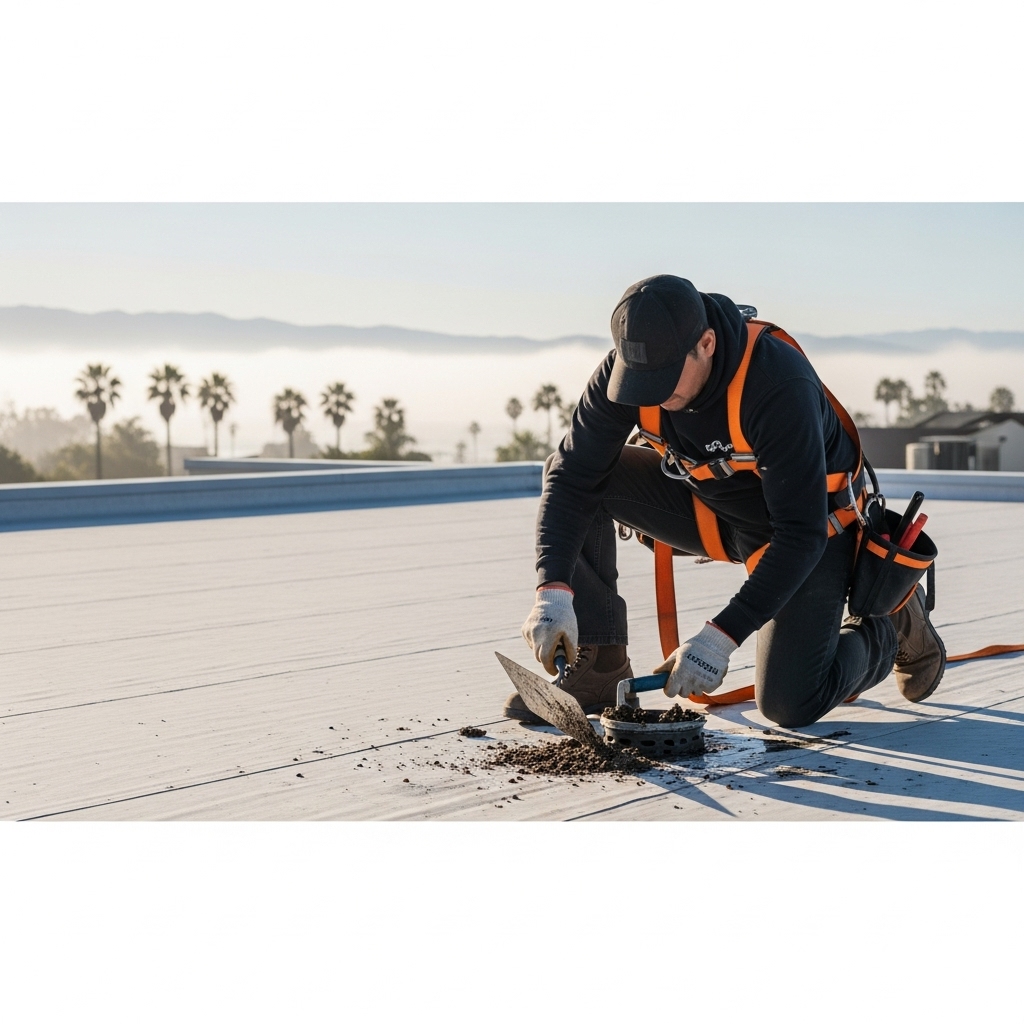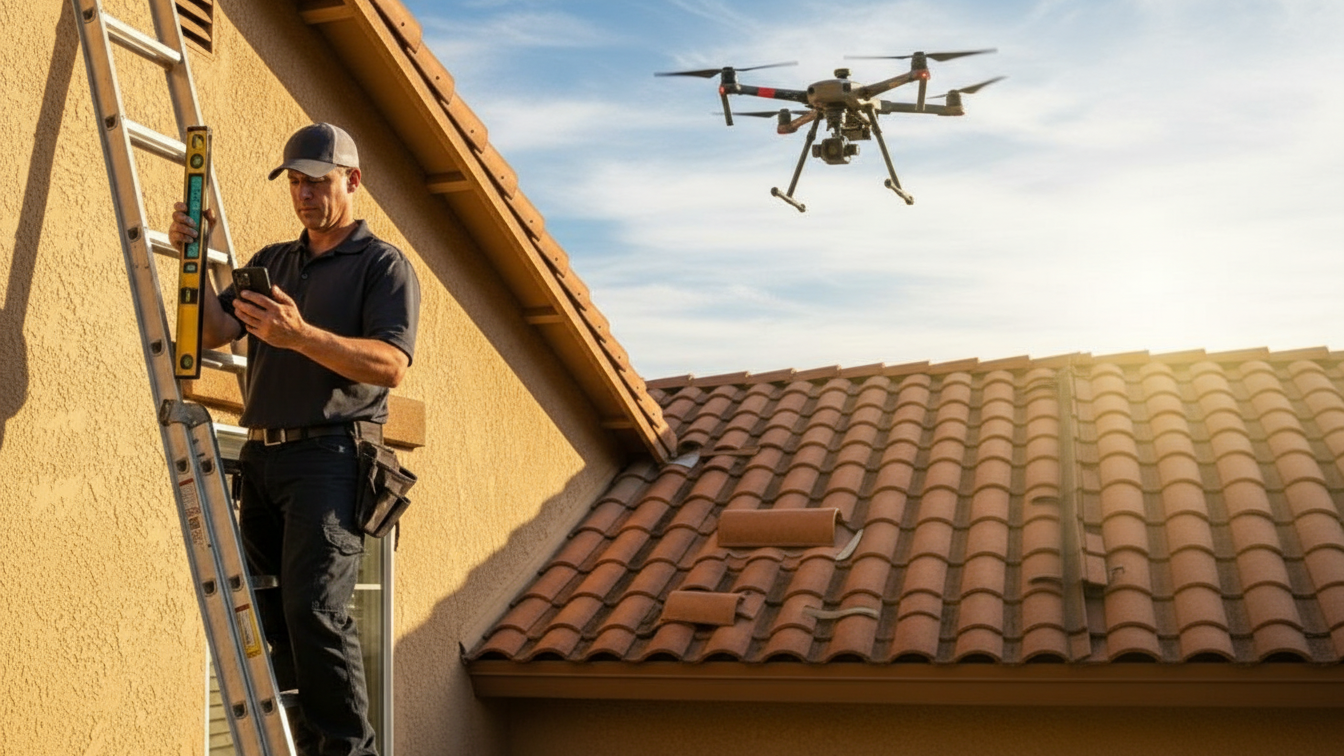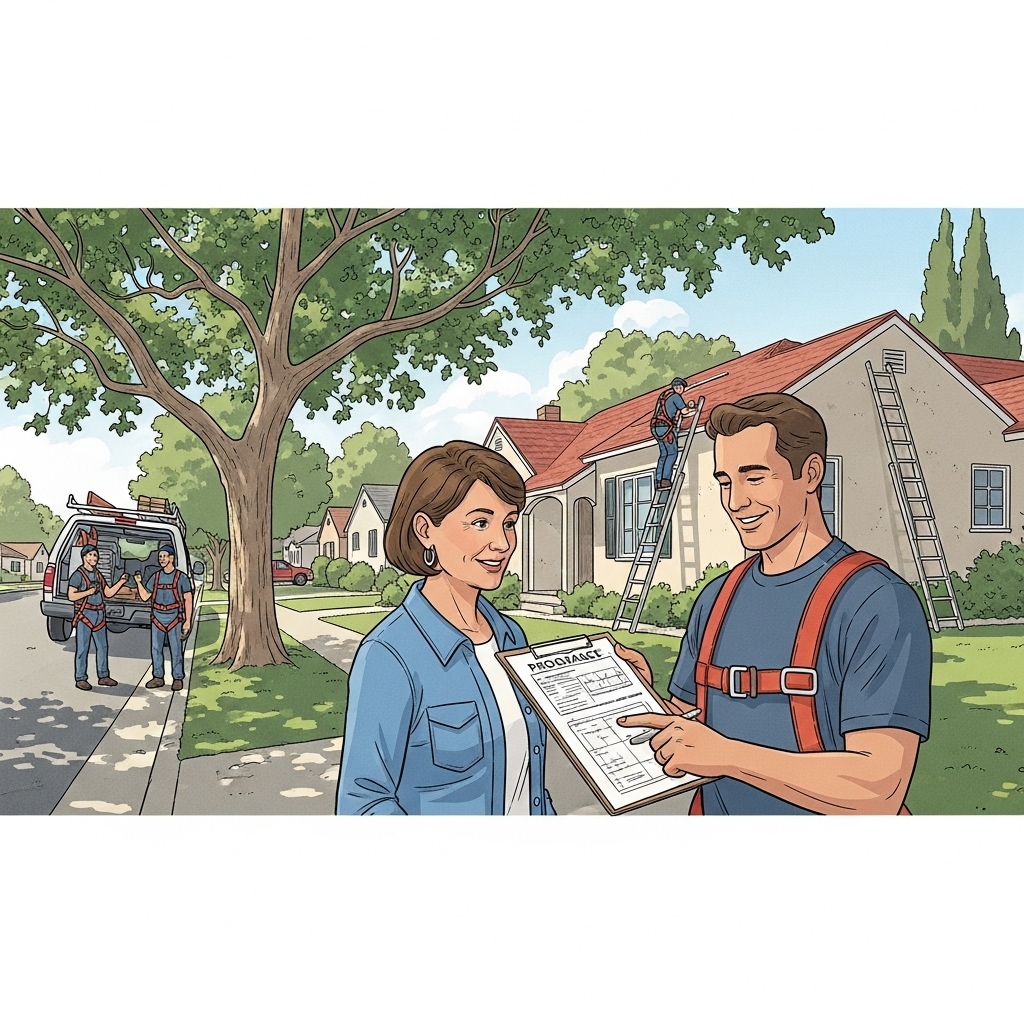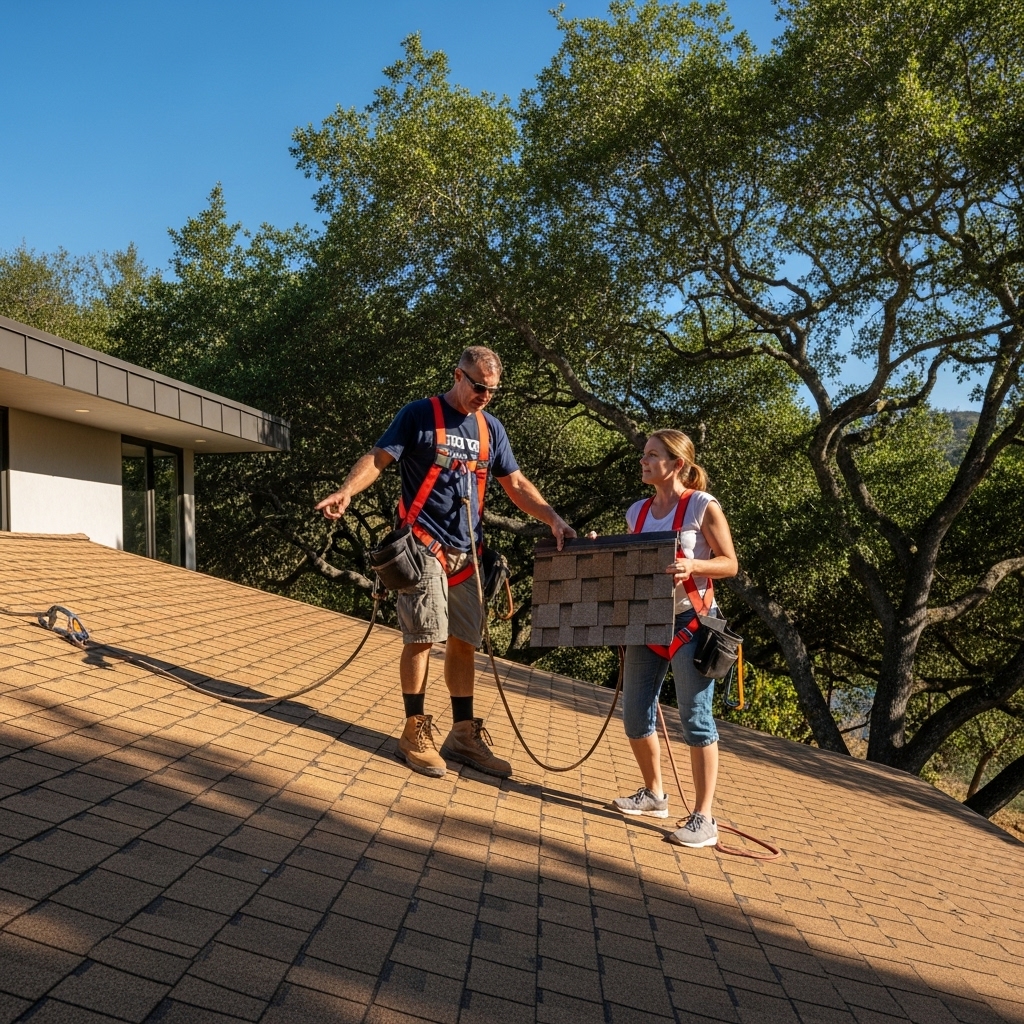In Santa Barbara, the roof over your business is more than a protective layer; it is a living part of the building that interacts with marine air, bright sun, and the occasional powerful storm. Caring for it requires a rhythm that fits our seasons, an eye for the small details that coastal weather can exploit, and a practical plan that keeps tenants, staff, and customers comfortable. I have watched too many preventable leaks start with a single clogged drain or a cracked curb flashing after a windy afternoon. The good news is that a methodical approach to commercial roofing maintenance in Santa Barbara keeps issues small, manageable, and well ahead of the rainy season.
Think of maintenance here as steady, intentional attention. The objective is not to overwhelm your team with tasks, but to build a cadence—light touch in fair weather, detailed checks ahead of storms, and prompt response when something seems off. A roof maintained in this way does not just last longer; it protects the assets below, supports a healthier indoor environment, and reduces disruptions that ripple through your operations.
Start with a calendar that tracks our real seasons
We do not have dramatic winters, but we do have wet seasons and dry spells, and we certainly have cycles of marine layer mornings and sunbaked afternoons. An effective maintenance calendar anchors two major inspections each year: one in late summer or early fall, before the first serious rains, and one in spring, after the bulk of wet weather and any El Niño events. Supplemental quick checks after windy evenings or short downpours catch emergent issues while they are easy to correct.
Pre‑rain inspections focus heavily on drainage, sealants, and vulnerable edges. Spring inspections look for what water and sun have done—membrane fatigue, UV chalking, and small splits at terminations. These visits complement each other; they help you see the roof as a system across time rather than a set of isolated parts.
Keep water moving: drains, scuppers, and gutters
If you take only one lesson from coastal maintenance, take this: water that lingers will find a way into your building. Santa Barbara’s commercial roofs often feature low slopes that require meticulous drainage. Begin by clearing debris from drains and scuppers. Leaves from jacaranda and sycamore, windblown palm fronds, and even coastal sand can collect in surprising quantities. Remove debris by hand, never with tools that could damage membranes, and confirm that strainers are present and secured properly.
Test flow with controlled water. A simple bucket poured near high points shows how quickly water finds the drain and whether ponding begins to form. If you find depressions where water lingers beyond 24 to 48 hours in dry weather, flag them for corrective work. Catch basins, crickets, or tapered insulation might be the answer, and addressing the issue before the rainy season is far easier than during it.
Respect the power of the marine layer and salt
Salt is both subtle and relentless. It settles on metal surfaces and begins tiny corrosion processes that escalate in our coastal air. During maintenance visits, wipe down exposed metal flashings, check for blistered coatings, and look closely at fasteners and terminations. If you see early signs of rust at roof equipment rails or parapet caps, plan for cleaning and re-coating with compatible systems designed for coastal environments. It is not glamorous work, but it buys years of life and staves off costly replacements of metal that could otherwise have been preserved.
Remember galvanic compatibility. If you have dissimilar metals in contact—say, copper pipes meeting galvanized steel—introduce isolators and confirm sealants are appropriate for both surfaces. It is the kind of detail that sounds fussy until you look at the rotted fasteners and stained stucco that can result from overlooking it.
Membranes, flashings, and seams: the quiet heart of performance
Most commercial roofs in our area are single-ply, modified bitumen, or built-up systems, and they all share one truth: the details are where leaks originate. Keep a maintenance lens trained on seams, outside corners, inside corners, and penetrations. UV exposure and minor movement can begin to wrinkle or micro-crack materials at these points. Early detection lets you weld, patch, or reseal while the affected area is small.
Pay special attention to vertical transitions and equipment curbs. Kitchen exhausts, in particular, are hard on roofing because grease and cleaning agents can degrade adjacent materials. Use compatible protection mats under service areas and reinforce nearby seams if traffic is heavy. These little improvements soften daily wear and keep your warranty in good standing.
Traffic management on the roof
Roofs are workplaces in their own right. HVAC techs, electricians, telecom installers, and solar crews all need access. The difference between a roof that ages gracefully and one that struggles often comes down to walk paths and clear expectations. Install walk pads in predictable routes to and around equipment clusters. Label penetrations so technicians know where to pass lines and where to avoid stepping. Encourage vendors to use carts with soft tires and to stage tools thoughtfully. These cues reduce punctures and scuffs dramatically.
Training matters, too. A fifteen-minute roof orientation with your regular service vendors pays returns for years. Explain which areas are most vulnerable, point out drain locations, and ask them to report anything that looks unusual. A second set of eyes during routine equipment maintenance often catches early roofing issues at no additional effort.
Prepare for wind and heat
Sundowner winds can arrive with short notice, and their gusts tug at edge metal, loose flashings, and vulnerable corners. During late summer, check terminations and fastener patterns at perimeters. Replace any lifted sections and confirm that gutter straps and downspouts are secure. On the heat front, look for signs of UV chalking, shrinkage at seams, and surface crazing on coatings. If a coating refresh is due, plan it during mild weather to ensure proper curing and strong adhesion.
Thermal movement is subtle on calm days but significant across seasons. Accommodating it is a design issue, but observing it is a maintenance task. If you see consistent stress at a joint or repeated cracking of sealant at a particular penetration, bring it to your roofer’s attention so an expansion-friendly detail can be introduced.
Documentation that pays off
Keep a simple but thorough log. Record dates, weather conditions, the areas inspected, and the actions taken. Photograph drains before and after cleaning, seams that were patched, and any suspected problem spots. Over time you will build a map of the roof’s behavior. Patterns—like a recurring wet patch near a parapet or a drain that clogs every fall—become obvious and solvable.
Documentation makes warranty conversations easier and speeds troubleshooting in the future. If you ever change property managers or bring in a new service partner, that record becomes a gift, saving hours of rediscovery and ensuring continuity of care.
Coordinate with solar and mechanical teams
Many Santa Barbara roofs support solar arrays and extensive HVAC. Coordinate maintenance schedules so roofing checks follow mechanical service. After panels or units are serviced, inspect the surrounding areas for dropped screws, misplaced tools, or scuffs. Verify that rails and supports are secure and that any new penetrations were flashed to specification. When disciplines communicate, the roof benefits; when they work in silos, small oversights lead to leaks.
It is also wise to revisit ballast or wire management under arrays after a windy spell. Loose wires can saw at membranes, and poorly contained ballast can migrate. A quick visual sweep prevents long-term abrasion and keeps debris from blocking water pathways.
Know when to call a professional
Maintenance crews can handle cleaning and basic observation, but skilled roofing technicians should evaluate splits, uplift at edges, persistent ponding, or anything that suggests water migration below the membrane. Santa Barbara’s permitting and reflectivity requirements also come into play when more substantial repairs are considered. If an area needs replacement or a new overlay, a local expert can confirm the best approach and help keep you compliant.
Partnering with a team experienced in commercial roofing pays off because they recognize local patterns quickly—where salt strikes hardest, which corners are most wind-exposed, and how to balance performance with the area’s design sensibilities. They also know how to schedule work to minimize disruption in busy districts and tourist seasons.
After the storm: swift, calm response
When a significant rain or wind event hits, move quickly but methodically. Start with safety, then document conditions and triage obvious issues like blocked drains or displaced edge pieces. Temporary measures—such as protective patches or tarps—can stabilize a situation until permanent repairs are made. Communication with tenants matters here; clear updates build trust and reduce anxiety. Once conditions settle, schedule a follow-up inspection to catch what might have been missed in the rush.
Post-storm debriefs are valuable. Note what worked, what failed, and which vendors responded promptly. Adjust your maintenance plan accordingly. Over time, this cycle turns unpredictable weather into manageable events, with fewer surprises and faster recoveries.
FAQ
Q: How often should a commercial roof be inspected in Santa Barbara? A: Twice a year is a strong baseline, with quick checks after significant wind or rain. Pre‑rainy season and post‑rainy season visits catch the majority of issues before they escalate.
Q: What is the most common maintenance miss? A: Clogged drains and scuppers. They seem minor until water accumulates and stresses seams, flashings, and the deck below.
Q: Do I need special products because of salt air? A: In many cases, yes. Corrosion-resistant metals, compatible sealants, and coatings designed for marine adjacency improve longevity.
Q: How should I coordinate with roof-top vendors? A: Provide a brief roof orientation, mark walk paths, and schedule roofing checks after mechanical or solar service. These habits prevent avoidable damage.
Q: Can my facilities team do minor repairs? A: Cleaning and basic patch observation is fine, but seam welding, edge reattachment, and structural corrections should be handled by qualified roofers to protect performance and warranties.
Q: What about wildlife or vegetation on the roof? A: Remove nesting material, discourage standing water that attracts birds, and clear windblown seeds to prevent root intrusion. Always use roof-safe methods.
Q: Is coating a good maintenance strategy? A: Coatings can extend life when the underlying system is sound. They are not a cure-all but can be excellent when applied at the right time and with proper prep.
Q: How do I plan for future solar? A: Ask your roofer to design routes and reinforcements now, so the future array ties in cleanly with minimal penetrations and minimal disruption to your operations.
If you want a maintenance plan that fits our coastline, protects your building, and keeps occupants comfortable through every season, connect with local experts who know these roofs. The care you invest today prevents tomorrow’s emergencies. When you are ready to put a calm, reliable program in place, talk with professionals in commercial roofing to set up inspections, streamline vendor coordination, and keep your roof performing at its best.






